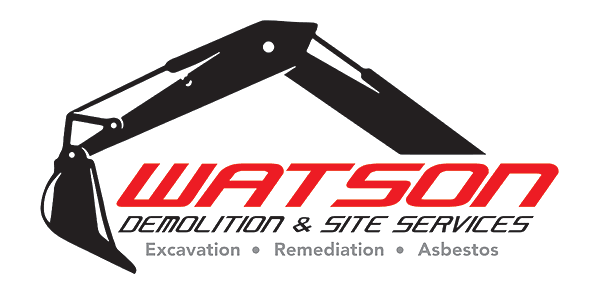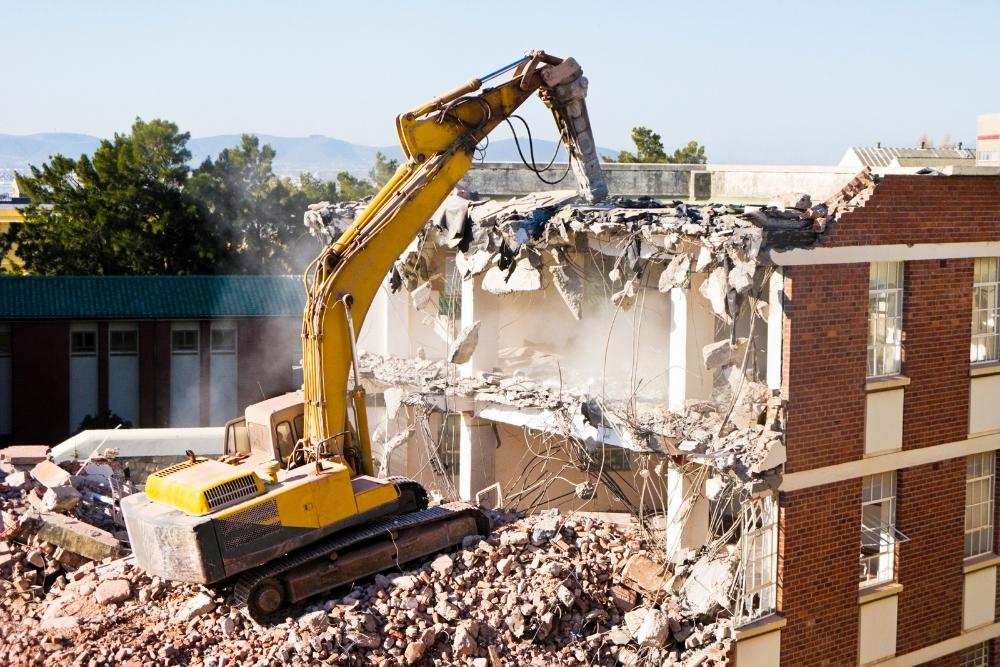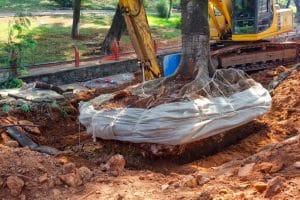Demolition is a very important part of the construction. If you want to get rid of old buildings, then you need to demolish them. The question is How long does it take to prepare a building for demolition?
Demolishing a building can be a complicated task. There are several things that need to happen before the actual demolition begins.
First, you need to identify the type of structure that needs to be demolished. Then, you need to determine whether or not the building has asbestos or other hazardous materials inside. Next, you need to figure out where the building is located and who owns it. Finally, you need the demolition plan method.
It depends on the size of the building and the complexity of its components. For example, a large building might require multiple days to dismantle. On the other hand, a smaller building might only take a couple of hours.
The cost of the demolition will depend on many factors including the location of the site, how much material must be removed, the number of subcontractors involved in the demolition process, and the amount of training required for workers on the job site. However, if you have a lot of heavy equipment working at one time, you could potentially save money by having fewer labourers do more work. You also might consider hiring an experienced demolition contractor with an extensive demolition year experience.
You might think that the hardest part of demolition is actually getting started. But once your demolition Hunter Valley crew finishes preparing the floor or wall, the next step is usually to remove everything from underneath the structure. This includes furniture, appliances, fixtures, pipes, wiring, insulation, drywall, plasterboard, etc.
Once they finish removing this stuff from the floor, the crew will use power tools like saws, drills, grinders, sanders, electricians, plumbers, carpenters, painters, etc. to tear down the remaining parts of the building. So, there can be quite a bit of preparation work done before demolition even starts.
Once all of the debris has been removed, the demolition process continues. During normal demolition, a crane would probably be used to lift up the roof and blow it away. But sometimes, especially when dealing with older structures, you may need to use a wrecking ball instead. As soon as the roof is gone, the rest of the walls come down next.
When this happens, the workers will knock holes into any concrete foundations so that they can break the foundation from below. After that, they will remove the rubble that was left behind from the previous steps. And finally, after the rubble is cleared, the entire demolition crew moves on to their next assignment.
In order to reduce the risk of injury during demolition, you should provide proper protective gear and training for your workers. Workers should wear hard hats to protect themselves from falling objects and electrical hazards. They should also wear appropriate clothing and shoes to prevent cuts and scrapes. And lastly, they should wear eye protection whenever possible.
When planning for demolition, it’s important to keep in mind that no two jobs are alike. Some buildings have very little damage, while others are riddled with dangerous conditions such as mould, termites, and lead paint. In these situations, it requires a trained demolition crew to carefully examine the property for any potential dangers and make sure that the whole area is properly cleaned beforehand.
If the building structure was built over 100 years ago, then it might also contain asbestos. The best way to find out if the building contains asbestos is to contact a licensed asbestos inspector. If asbestos is found, then your company will be responsible for cleaning up the area before starting the demolition process.
When planning for demolition, it is always good to remember that you must get permission first. Before beginning the demolition of a commercial property, you’ll want to discuss your plans with the owner and obtain his or her permission. You’ll most likely need to follow local ordinances regarding the types of material that can be taken off-site, how long permits must be obtained, and whether or not the public needs to be notified about what’s going on at the property.
How long does it take to demolish a building?
The demolition of a structure can vary in length depending on many factors but generally takes about two weeks. Typically, this includes removing all materials (including wood framing) and disposing of them appropriately. It can also include removing hazardous materials, clearing out construction waste, and disposing of that. In some cases, it may involve cutting open the interior of the building and tearing out the structural framework, which could add several days to the total time required.
If it seems like an unusually large amount of equipment is being brought to the job site, don’t worry – the number of people needed to complete the demolition is just as important as the size of the equipment itself. A small group of highly skilled, experienced workers can perform much more than one larger crew.
Demolishing a building can be a challenging task, but with the right kind of skills, resources, and knowledge, anyone can do it. There are plenty of resources available online to help you learn more about building demolition, including videos, books, and articles. Don’t hesitate to ask questions when you’re unsure of anything; there are so many different things that go into demolition that you never know where to start looking.
Demolition is the act of destroying something, causing its dismantling by force. This forceful action is often used when the original use of a thing has ended. For example, old factories demolished after their purpose had been served were once full of parts and machinery, waiting to be reused in new ventures.
When a building is too outdated to repair, chances are it is obsolete and ready for replacement. Demolition experts often advance through several career stages to maximize opportunities, working closely with general contractors and subcontractors who demote them into specialized positions.
What is the process for demolishing a building?
Demolition of residential structures usually involves either pulling down or knocking down the house using heavy machinery. Once the ground floor is cleared, all contents must be removed, along with walls and other debris that would hinder construction. All electrical wiring must be disconnected from power lines and pulled away, along with gas pipes.
In most cases, demolition companies will require the homeowner to sign a permit authorizing the destruction of the home. To obtain the permit, the homeowner should fill out the paperwork with the city, county, or state office.
The forms will outline the specific type of demolition being conducted and request approval to proceed. After signing the papers, the contractor will provide the owner with a detailed estimate of the cost. The homeowner will typically pay half upfront and then monthly instalments until the entire price is paid.
When does a building have to be torn down?
You’ll want to consult with your local building department for information about how long you need to wait before beginning demolition. They will tell you what permits are necessary, if any, and whether you will need to apply for special permission. Local regulations regarding asbestos abatement might also affect the timeline.
Once you’ve obtained the proper permits, contact your valley demolition company to schedule the job. You’ll need at least three days’ notice before the actual demolition begins. If you don’t give enough notice, you risk having your property seized while you are not present.
For commercial buildings, there’s a lot more involved. If you own a restaurant, it may be tempting to keep it open until the last possible moment. But this could leave you scrambling when your business closes unexpectedly. It’s better to shut everything down a little earlier than you planned, so you can quickly make repairs and get back on track.
Commercial businesses will likely have to close for longer periods of time. Depending on your lease agreement, you can expect to lose rent payments for as many as two months while you restore and renovate your space. Some landlords will allow subleasing during renovation times, which gives you an opportunity to find another tenant in the meantime.
You may also receive assistance from your lender or mortgage holder. Many lenders offer to finance demolition projects, allowing homeowners to pay off part of the costs upfront. In some instances, they offer partial loan forgiveness.
The goal of demolition is to reduce damage to surrounding properties caused by your building. As such, it helps to think of demolition as prevention. Before you begin tearing things down, spend some time assessing existing conditions and making sure nothing needs immediate attention.
If you’re planning to tear down a large building, it’s best to hire a professional demolition company for the task. Large-scale operations like these are more complex and risky, requiring experienced teams or trained teams to ensure health and safety and prevent damage.
What happens when a building is demolished?
In many cases, the demolition service company will remove all the appliances, electronics, furniture, flooring, and other fixtures from the building. This makes room for the new construction industry, renovations, or whatever else you decide to do next.
If this isn’t done properly, however, the items inside may become damaged or destroyed. For example, removing a refrigerator is often easier said than done. With no place to store its contents, the refrigerator becomes useless once the walls come down. Most people opt to simply toss them into the trash rather than deal with the inconvenience.
It’s important that the demolition site is safe and clean. Otherwise, debris will collect and attract pests, attracting unwanted attention from animals, insects, and humans.
During the demolition process, you should call pest control companies if any problems arise. And just because the area looks clear doesn’t mean it’s completely free of hazards. The soil beneath the building could contain asbestos.
If asbestos removal exposure occurs, you may be required to obtain special permission (and pay extra) to remove it safely.
You might even encounter heavy machinery — such as cranes, excavators, bulldozers, and draglines — at the demolition site. These powerful machines create their own set of risks, including the potential to cause injuries to nearby workers or passersby.
Keep in mind that most local laws require the presence of someone who owns the land where the building rests. Your company or landlord must sign a permit authorizing the demolition, and you must provide proof of insurance before you begin working.



